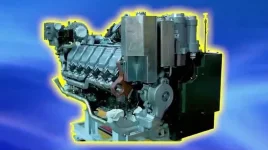- Views: 3K
- Replies: 17

India's strategic nuclear capabilities are poised for further enhancement with the imminent commissioning of its third nuclear-powered ballistic missile submarine (SSBN), the INS Aridhaman (S4). This development follows the recent induction of INS Arighaat (S3) into active service in August 2024, signifying the continued progress of India's indigenous SSBN program.
The program, initiated with the commissioning of INS Arihant (S2) in August 2016, represents a cornerstone of India's strategic deterrence posture. The Arihant, the country's first indigenously built SSBN, displaces 6,000 tonnes and is powered by an 83 MW pressurized light-water reactor (PLWR) developed by the Bhabha Atomic Research Centre (BARC) using enriched uranium fuel.
This marked a critical step in establishing a credible sea-based nuclear deterrent, forming the third leg of India's nuclear triad, complementing its land-based ballistic missiles and strategic bomber aircraft.
The INS Arighaat, commissioned recently, builds upon the foundation laid by the Arihant. While maintaining the same reactor and overall dimensions, it incorporates significant technological advancements.
These are believed to include improved sonar systems for enhanced underwater detection capabilities, upgraded navigation systems for precise positioning, enhanced stealth features to reduce detectability, and advanced fire control systems for improved targeting accuracy.
These upgrades mark the maturation of India's SSBN development and underscore the country's commitment to bolstering its strategic assets. The Arighaat is expected to be armed with the K-15 Sagarika submarine launched ballistic missiles which have a range of 750 km.
The forthcoming INS Aridhaman, nearing completion, will further enhance the Indian Navy's underwater strategic capabilities. While details remain limited, sources suggests it will continue to utilize an upgraded version of the 83 MW reactor, the heart of its predecessors, now incorporating design changes based on operational feedback for the reactors of previous submarines of the class. These enhancements are reported to focus on improved maintenance features and enhanced safety measures for the crew.
This continuous improvement reflects the iterative approach adopted by BARC, the primary developer of the reactor, in refining the technology over time. The Aridhaman is expected to be armed with the under-development K-4 submarine launched ballistic missiles which have a reported range of 3500 km.
The development of India's SSBN fleet is part of a broader strategic vision that emphasizes a "No First Use" (NFU) nuclear doctrine. India's nuclear doctrine emphasizes a posture of credible minimum deterrence, relying on a survivable second-strike capability. SSBNs, with their ability to remain submerged for extended periods, provide an essential element of survivability against potential adversaries.
The ongoing development of India's SSBN fleet, including the INS Aridhaman, signifies a significant step in the country's pursuit of a robust and credible sea-based nuclear deterrent. While details on specific capabilities remain classified, the continuous improvements being made highlight India's commitment to technological advancement and its determination to maintain a secure and reliable strategic deterrent in an evolving geopolitical landscape.
It is also believed that India is working on a new class of nuclear-powered ballistic missile submarines dubbed the S5-class which will be larger than the Arihant class and capable of carrying 12-16 nuclear ballistic missiles.




